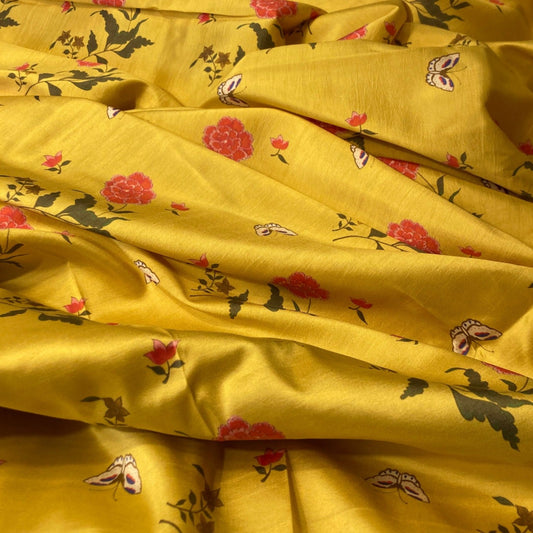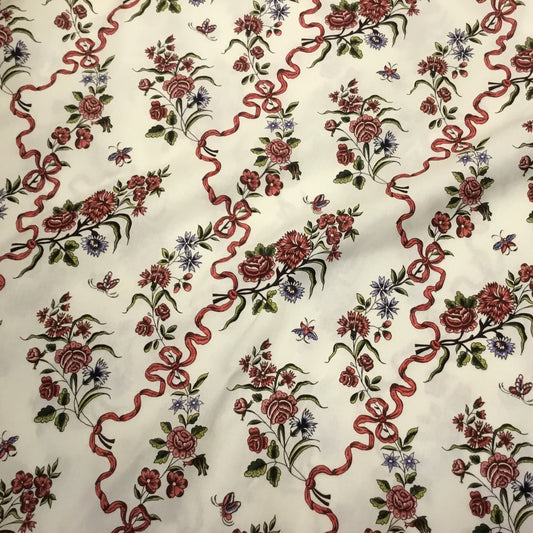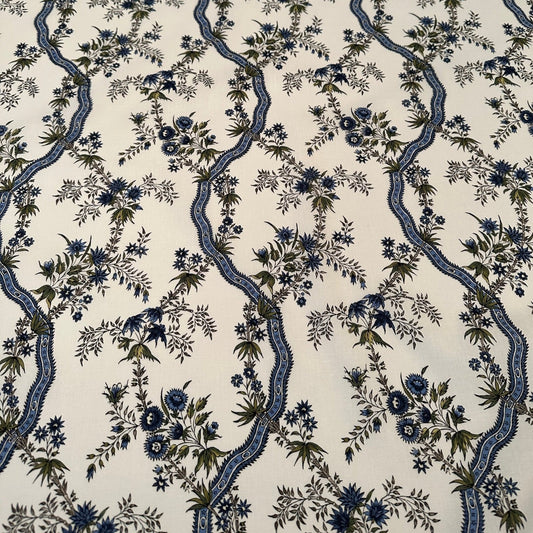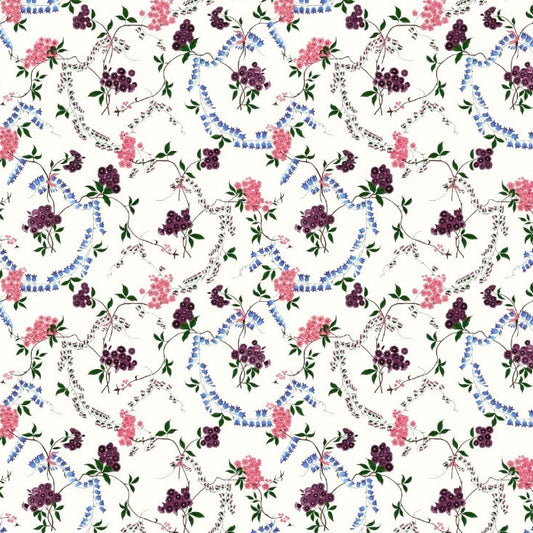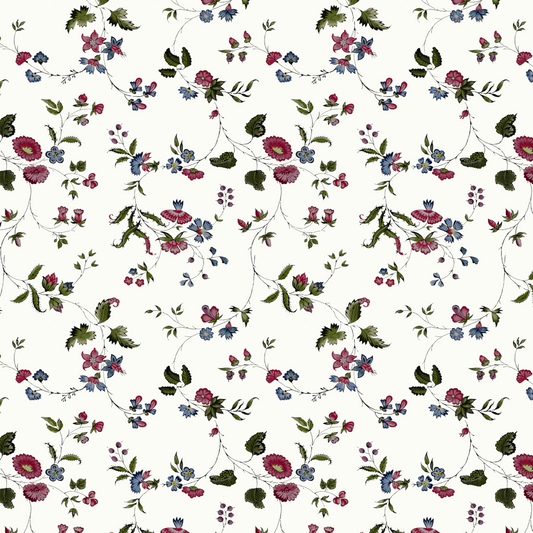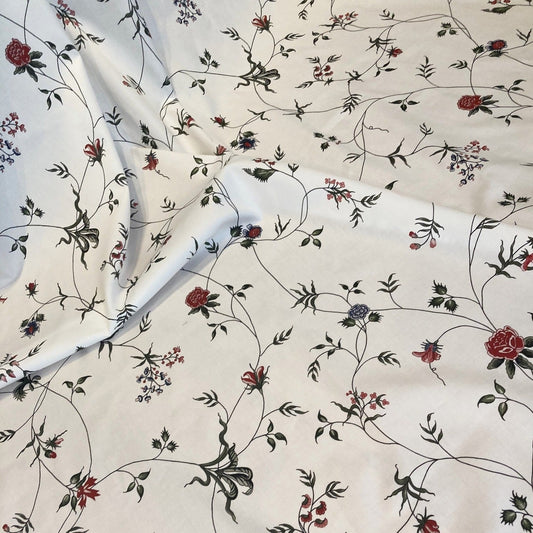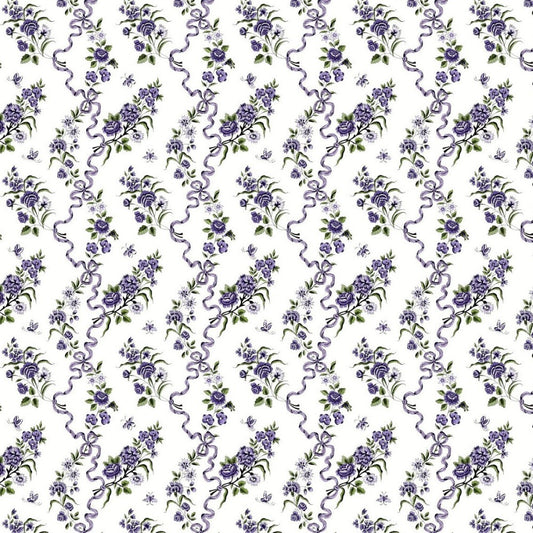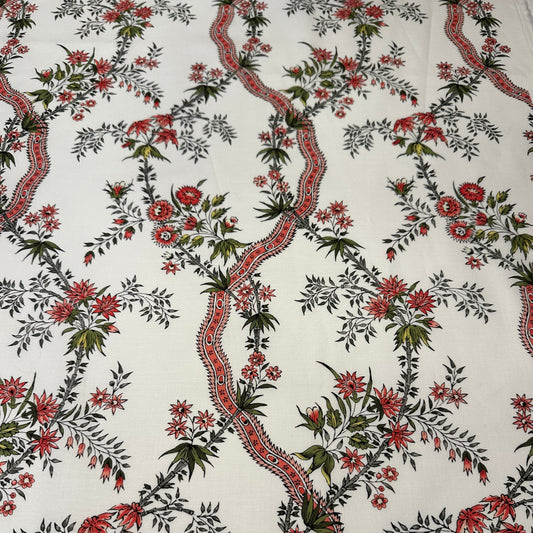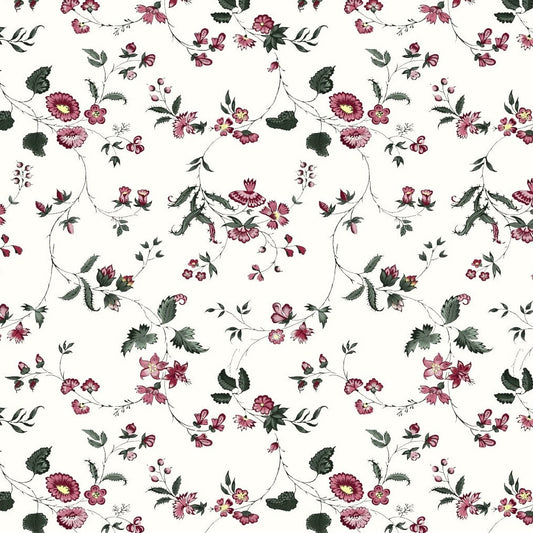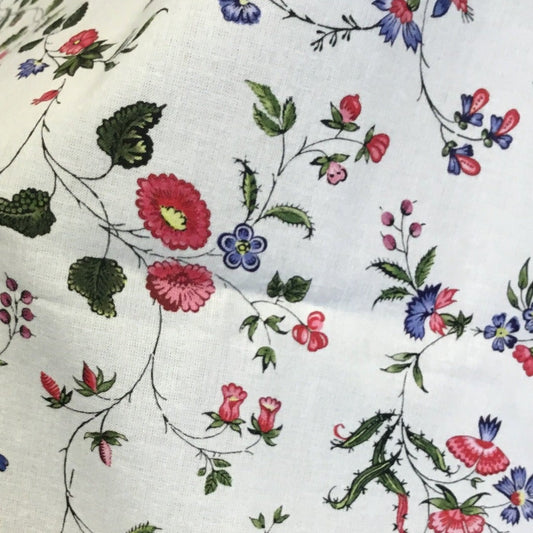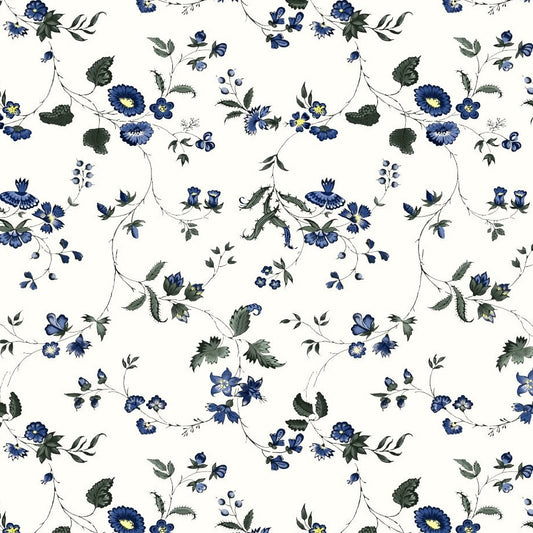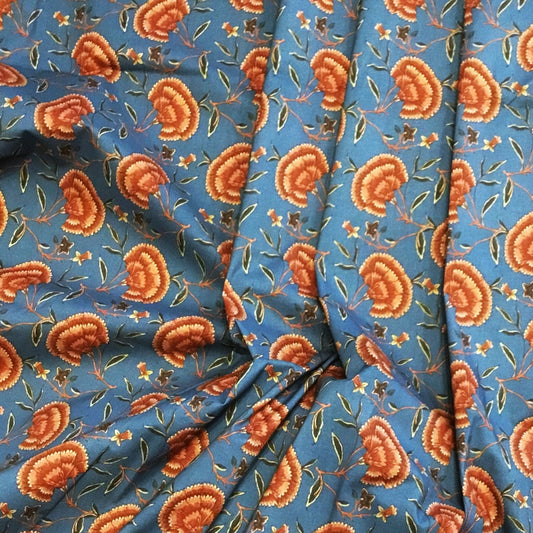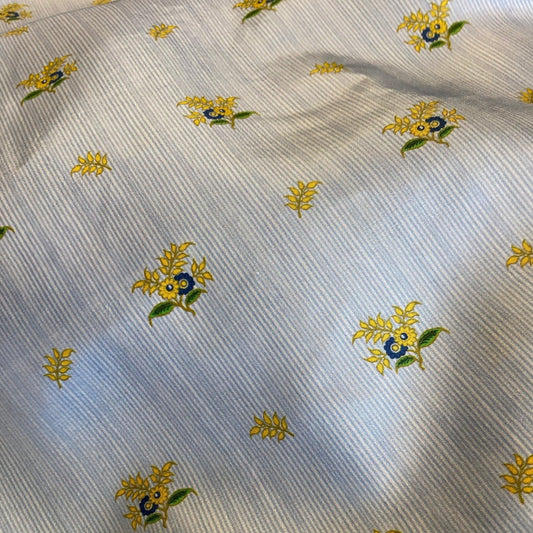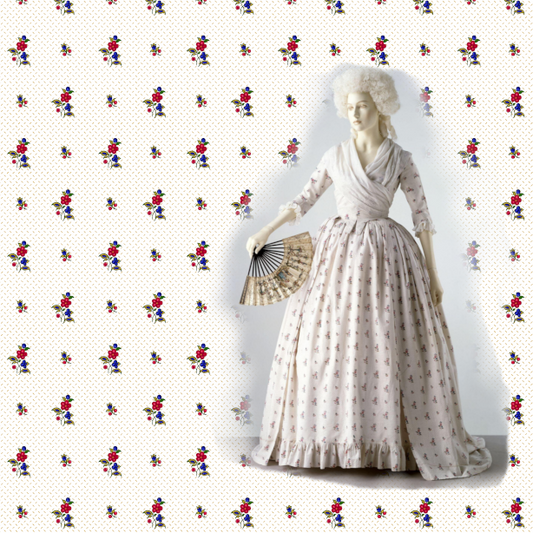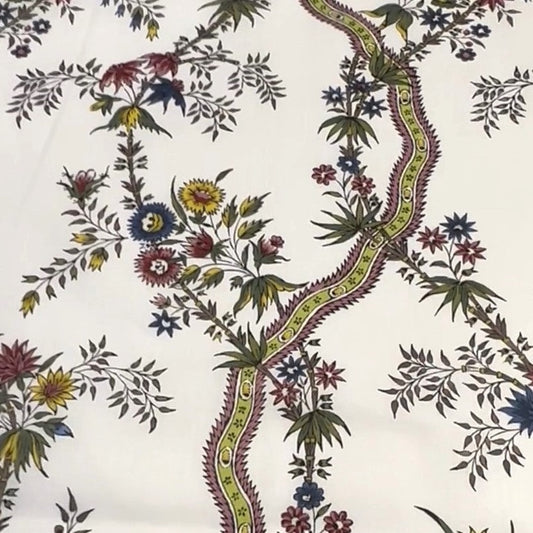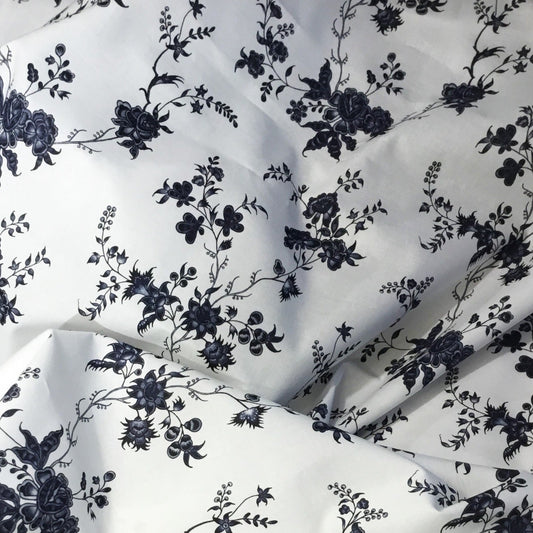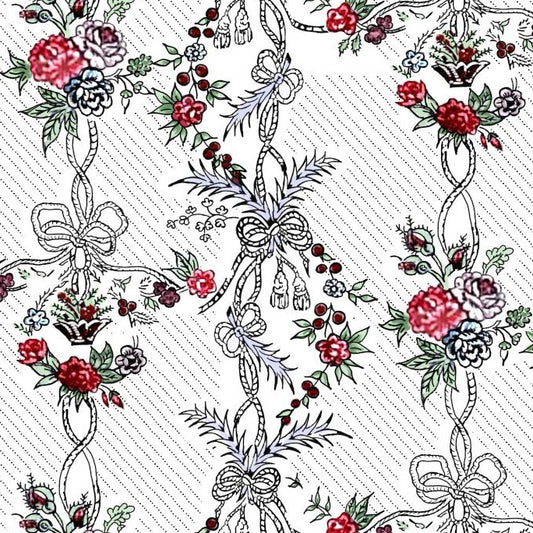Collection: Robe à l'anglaise
In the late 18th century, the Robe à l’anglaise was a style of gown that represented English fashion influence and was characterized by a fitted bodice. It differed from the Robe à la française in several key ways:
Silhouette: The Robe à l’anglaise had a more fitted bodice compared to the flowing, pleated back of the Robe à la française.
Back Construction: The Robe à l’anglaise featured an “en fourreau” back, where the back panel was pleated and sewn down to create fullness in the skirt, as opposed to the free-flowing pleats of the Robe à la française.
Front Closure: While both styles could have open skirts revealing petticoats, the Robe à l’anglaise often had a closed front bodice that could be fastened with hooks and eyes or pins.
Influence: The refined simplicity and neat tailoring of the English style gown grew increasingly influential in France during this period, with French fashion magazines regularly featuring and praising the elegance of the Robe à l’anglaise by the 1770s.
Ornamentation: The Robe à l’anglaise was typically less adorned than its French counterpart, with minimal trimmings such as bands of self-fabric trim.
Fabric Choice: The choice of fabric for these gowns varied but often included delicate patterns like silk damask, showcasing the practice of repurposing finely woven fabrics from earlier periods.
Evolution: Over time, the Robe à l’anglaise evolved from its French predecessor by eliminating some of the characteristic pleating and adopting a more streamlined silhouette with reduced emphasis on exaggerated hips.
The construction process for a Robe à l’anglaise involved intricate steps such as creating en fourreau pleats at the back panel, sewing together various pieces including front bodice panels, back panels, sleeves, and skirts, as well as finishing details like boning in the center front bodice for support and closure methods like hooks and eyes or pins.
Overall, the Robe à l’anglaise exemplified a shift towards simpler yet elegant styles influenced by English tailoring practices that gained popularity in late 18th-century European fashion circles.
-
1780 Duchess Hedvig Elisabeth Charlotta
Regular price €30,94 EURRegular priceUnit price / per -
1780 Michelle de Bonneuil - Colourfull
Regular price From €26,18 EURRegular priceUnit price / per -
1780 Lucy Terry - Blue
Regular price From €26,18 EURRegular priceUnit price / per -
1780 Dorothea Jordan - Modern
Regular price From €29,75 EURRegular priceUnit price / per -
1775 Virginia Manderström - Karmin
Regular price From €26,18 EURRegular priceUnit price / per -
1785 Brita Sidonia Gadd
Regular price From €26,18 EURRegular priceUnit price / per -
1780 Michelle de Bonneuil -Violet Griotte
Regular price From €26,18 EURRegular priceUnit price / per -
1780 Michelle de Bonneuil - Blue
Regular price From €26,18 EURRegular priceUnit price / per -
1780 Lucy Terry - Coral
Regular price From €26,18 EURRegular priceUnit price / per -
1775 Virginia Manderström - Red
Regular price From €26,18 EURRegular priceUnit price / per -
1775 Virginia Manderström - Crimson
Regular price From €27,37 EURRegular priceUnit price / per -
1775 Virginia Manderström - Blue
Regular price From €27,37 EURRegular priceUnit price / per -
1780 Olympe de Gouges - Colourfull
Regular price From €26,18 EURRegular priceUnit price / per -
1770 Ulla von Höpken
Regular price €30,94 EURRegular priceUnit price / per -
1783 Catharina Ahlgren
Regular price From €26,18 EURRegular priceUnit price / per -
1780 Märta Helena Reenstierna
Regular price From €28,56 EURRegular priceUnit price / per -
1780 Marianne Ehrenström
Regular price From €29,75 EURRegular priceUnit price / per -
1780 Magdalena Rudenschöld
Regular price €30,94 EURRegular priceUnit price / per -
1780 Lucy Terry
Regular price From €26,18 EURRegular priceUnit price / per -
1775 Sophie Hagman
Regular price From €26,18 EURRegular priceUnit price / per -
1770 Katherine Read
Regular price From €26,18 EURRegular priceUnit price / per



